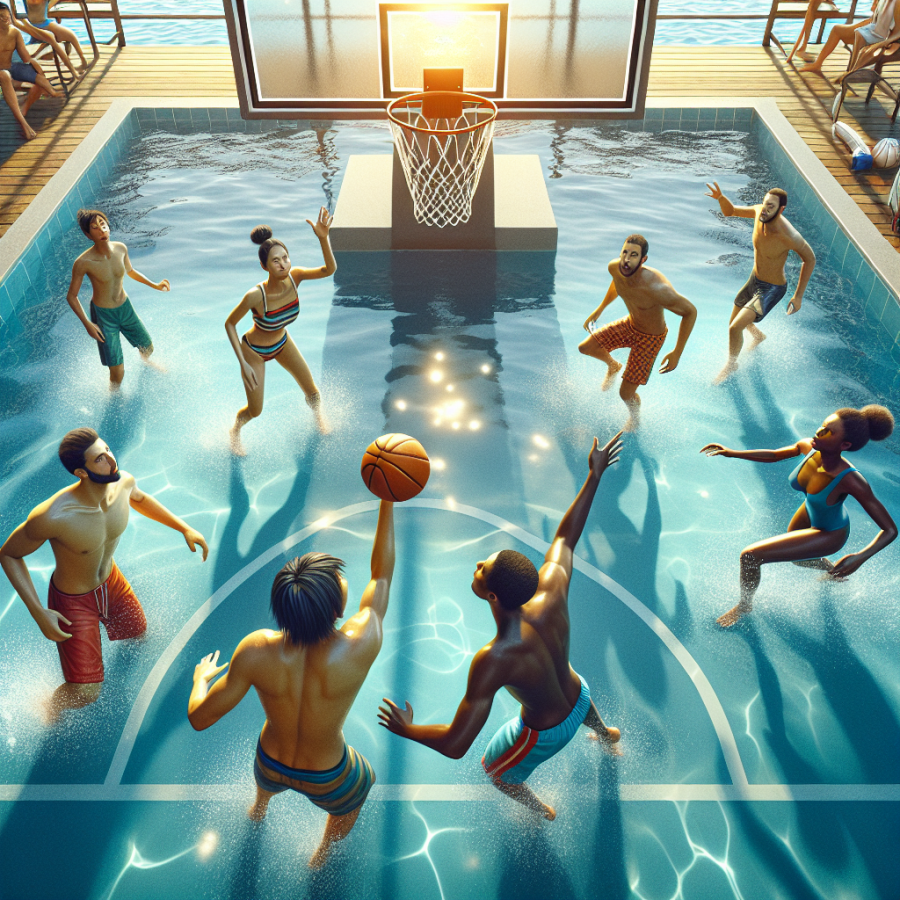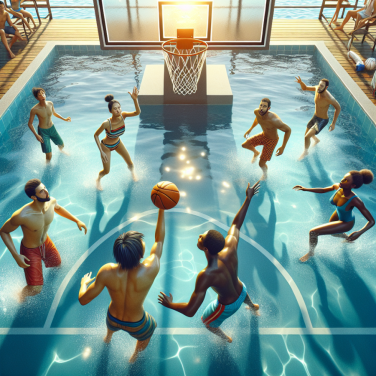Navigating the Waves of Water Basketball: Strategy and Skills
Water basketball, a unique blend of basketball and water polo, played in a swimming pool, requires players to employ a mix of traditional basketball strategies and specialized aquatic skills to excel. Mastering the art of movement in water is the first hurdle. Unlike on the hardwood, where quick pivots and sprints are standard, water basketball demands a proficiency in swimming and treading water, enabling players to effectively maneuver and maintain a stable shooting position.
Offense in water basketball relies heavily on quick, precise passing. Given the resistance of water, passes need to be stronger than in traditional basketball. Teams often adopt a more fluid style of play, with a focus on creating space and utilizing the non-stop motion of players. Excellent communication is paramount, as setting up plays without the benefit of gravity-assisted jumps requires a well-coordinated effort.
Shooting technique is also adapted for the aquatic environment. Players must be able to shoot with accuracy while floating, requiring core strength and impeccable timing. The buoyancy of the water alters the physics involved, so athletes often modify their shooting form, using more of an underhand flick than the overhand shots seen on land.
Defensively, the game changes markedly in the pool. Blocking shots, for example, takes on a different dimension when you cannot jump to meet the ball. Instead, defenders use their water treading ability to elevate themselves and create a barrier. Stealing the ball requires agility and quick reflexes, as the water's resistance can make sudden movements challenging.
Conditioning for water basketball is another critical factor. Players must cultivate endurance to maintain high energy levels throughout the game, as constant swimming and treading water can be exhausting. Specialized drills that enhance in-water stamina, agility, and strength are integral to a team's training routine.
One cannot ignore the psychological aspect of water basketball. Players must maintain concentration and composure while submerged in an environment that can be physically demanding and tactically challenging. Developing a mental resilience to adapt quickly to changing scenarios in the pool can give a team the edge over their competition.
Water basketball also places a unique emphasis on teamwork. The fluid nature of the game makes it difficult for individual players to dominate, so a collaborative approach is often the key to success. Teams that communicate effectively and work together to exploit each player's strengths while mitigating weaknesses tend to perform better.
In summary, while the foundations of water basketball are rooted in the traditional game, the aquatic environment demands a suite of specialized strategies and skills.
Read also:
The Haxey Hood: Exploring a Centuries-Old British Tradition
Making a Splash: The Thrills and Spills of Water Basketball Gameplay
Water basketball combines the classic game of hoops with the refreshing environment of the swimming pool, creating a unique and exciting aquatic sport. This blend of basketball and water polo requires players to adapt their techniques for shooting, passing, and dribbling, while also managing their aquatic movement. It is a game that demands both physical endurance and a strategic mindset, amplifying the fun and challenge.
The Thrills of Water Basketball Gameplay
The first and most exhilarating aspect of water basketball is the pace of the game. Water adds resistance that players are unaccustomed to on land, making every move more strenuous and every success more rewarding. The sensation of shooting a basket while partially submerged adds a twist to the scoring, as players must account for factors like water resistance and buoyancy. The high-energy environment of the pool amplifies the excitement of each successful basket and defensive play.
However, water basketball isn't just about brute force. It requires finesse and adaptation. Traditional dribbling is replaced by 'shuffling' the ball on the water's surface, demanding skilled hand-eye coordination. Passing becomes a game of precision, as players gauge the trajectory of the ball, both above and under the water. This adds a strategic layer to the gameplay, as players must anticipate their teammate's movements and the ball's response to the water's drag.
The Spills of Water Basketball Gameplay
While the game is exhilarating, it is not without its challenges, often referred to as the spills. One of the most significant spills is the increased risk of turnovers due to the unpredictable nature of the ball on water. Players have to constantly adapt to the ever-changing dynamics of the pool, from the wave motions caused by other players to the altered ball trajectory when it's wet.
Another spill is the increased physical demand placed on players. Swimming and treading water, while also engaging in vigorous gameplay, can lead to fatigue much faster than in traditional basketball. Players must not only have solid swimming skills but also the stamina to maintain their performance throughout the game. Conditioning plays a critical role in a team's success, and regular aquatic workouts become essential for maintaining gameplay intensity.
Despite the spills, or perhaps because of them, the thrill of water basketball is undeniable. The blend of aquatics and athletics offers a refreshing twist to both basketball and water sports enthusiasts. It's the perfect fusion for those seeking a novel, full-body workout and competitive play, making every splash, block, and basket a riveting experience.




